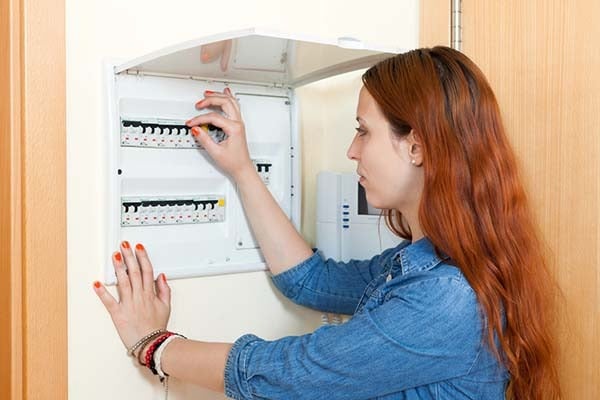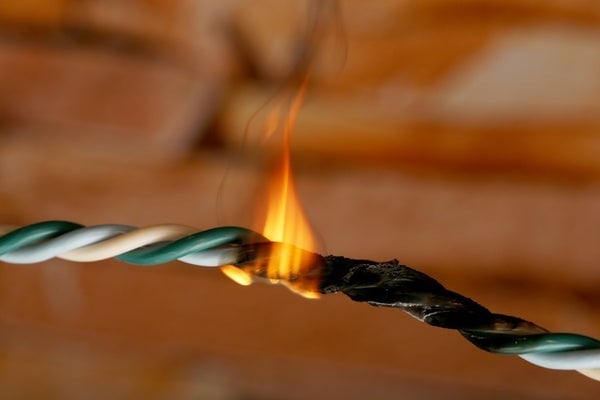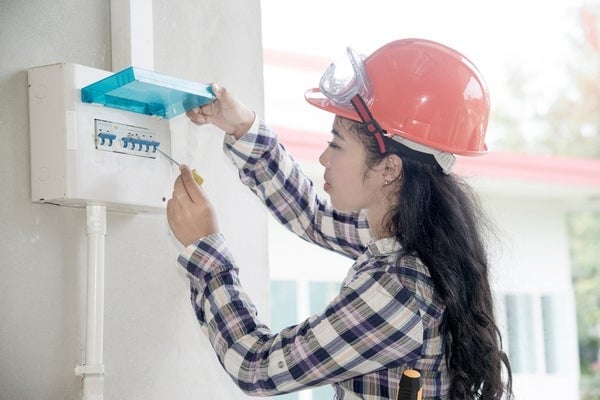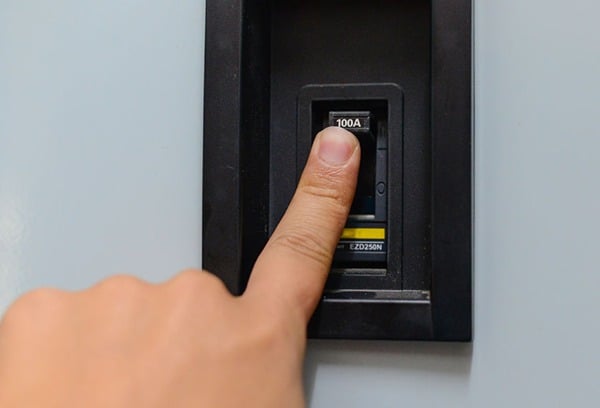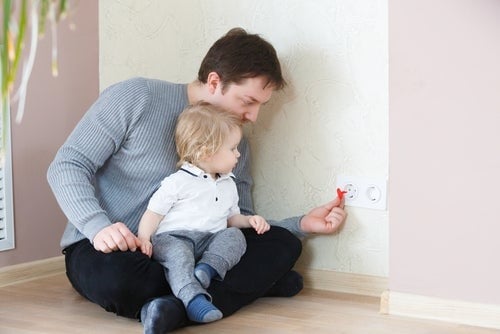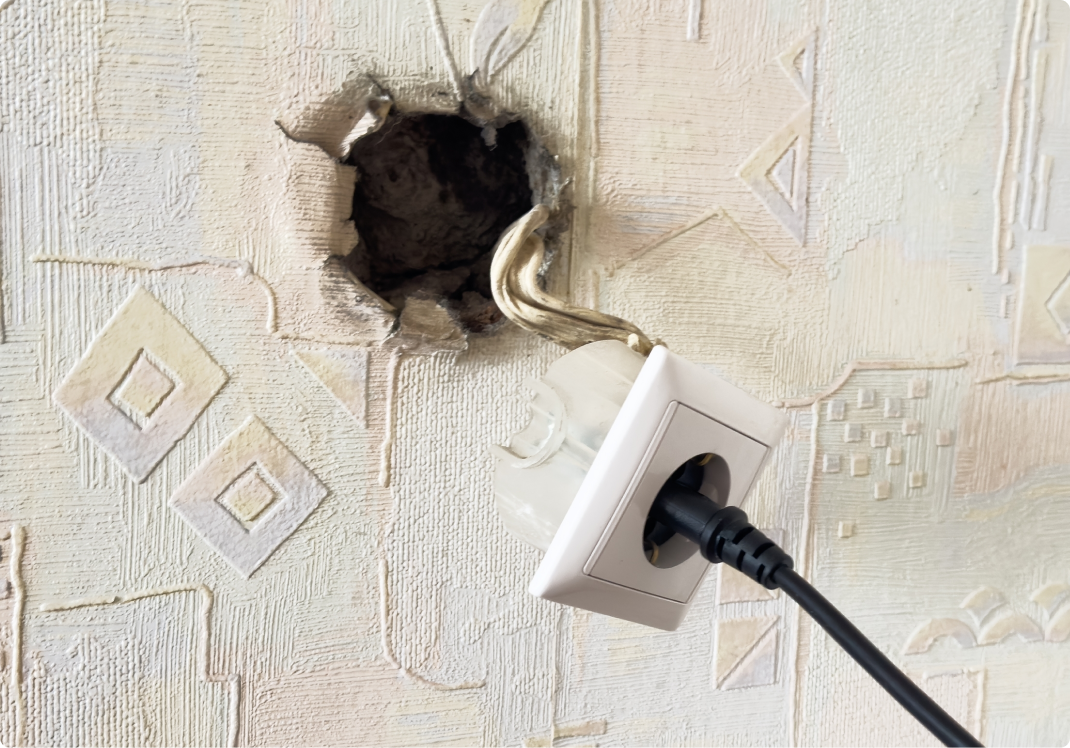You’re relaxing in your favorite armchair, reading a cozy mystery novel, when it happens again: the power shuts off, leaving you in pitch black. It’s frustrating when your circuit breaker keeps tripping, but discovering the reasons behind it can help illuminate why you’re being left in the dark.
Although you could just reset the circuit breaker every time it trips, figuring out the root of the problem will help you fix it once and for all. Common reasons your breaker keeps tripping include circuit overload, a short circuit, or a ground fault. The following information will help you understand the differences between these three reasons so that you can better resolve your circuit breaker and electrical system issues. And if the issue persists, having a home warranty can help cover the cost of repairs, giving you peace of mind.
What is a Circuit Breaker?
Your circuit breakers protect your home from electrical issues by cutting off the flow of electricity through a circuit whenever the electrical current gets too high and unsafe. Without circuit breakers, electrical fires, shocks, and other forms of damage and injury would occur much more often.
Before we get into the nitty-gritty of how a circuit breaker works, it’s important to understand how electricity works. Electricity is the name we give the movement of electrical charge from one atom to another. We use electricity as a secondary energy source that comes from a primary energy source like natural gas, coal, or even solar. Electricity is composed of three main qualities: voltage, current, and resistance.
Electrical voltage is the amount of pressure that it takes to make the electric charge move through the conductor. It flows at the rate of current. Resistance occurs when the electric current interacts with the conductor. Different kinds of conductors offer different levels of resistance, which is why some materials conduct electricity better than others. Remember the potato battery experiment you might have done in grade school? The potato helps conduct electricity by acting as a bridge between two metals.
You probably won’t be finding any potatoes in your home’s wiring system, though. The wiring in your house will usually be composed of three different types of wires: a hot wire that conducts the electric current, a neutral wire, and a ground wire. (Hot wires are usually black, neutral wires are usually white, and ground wires are usually green.) Like ships in the night, the hot and neutral wires will typically never touch each other. The current passes through an appliance that creates a high level of resistance to the current; this process keeps the voltage at safe levels.
However, every so often, something can cause the hot and neutral wires to come into contact. When this happens, the resistance to the current is dramatically reduced, which can cause dangerous voltage and current levels—even a fire. When these voltage and current levels are higher than they should be, you’ll have a tripped circuit breaker. The trip cuts off electricity to the circuit until the issue can be resolved and safety restored.
How Do I Know if a Circuit Breaker Has Tripped?
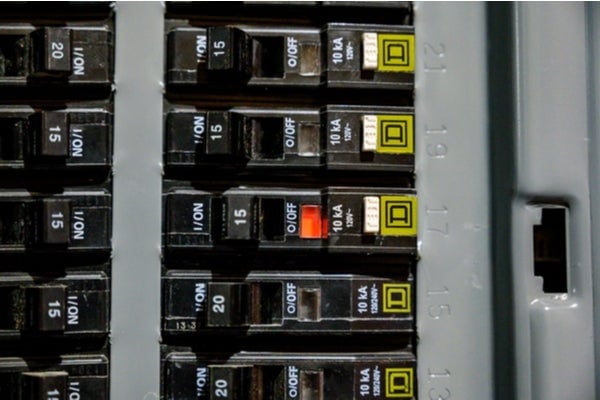
Usually, the greatest signifier of a tripped circuit breaker is power going off in a specific part of your house instead of throughout the house. You might also notice that multiple outlets in a single room—even a USB electrical outlet—have stopped working.
If your circuit breaker is tripping, check on your electrical circuits by going to your home’s electrical panel or fuse box. Make sure that you know where your electrical panel or fuse box is and that its opening is easily accessible and not blocked by furniture, boxes, books, or shelves.
If your circuit breaker and fuse aren’t accessible or labeled, it’s a good idea to take the time to figure out each switch or fuse and the area it controls. Then, when a circuit or fuse trips or blows, you’ll know exactly which one it is. For areas that might have two breakers or fuses, such as the kitchen, you should carefully label which part of the kitchen each of the two switches controls. Doing so will save you time and energy whenever your circuit breaker trips randomly.
If a circuit breaker trips due to exceeding its maximum amperage, its switch handle will have moved between the “on” and “off” positions. You may see a red area indicating that the circuit breaker has tripped. However, it depends on your electrical panel. For some panels, the trip only causes a minimal movement of the handle; in that case, you’ll need to look closely at the switches to figure out which one has tripped.
How Do You Reset a Tripped Circuit Breaker?
To reset your circuit breaker, turn off the breaker by moving the switch or handle to the “off” position. Then, turn it back on. For safety, it’s a good idea to stand back from, or to the side of, the panel, just in case any sparks come from the breaker when it’s moved. You might even consider wearing safety goggles to protect your eyes.
It's best to prepare for a power outage ahead of time. Remember to keep a flashlight and batteries near the electrical panel to help illuminate the area if the power is off (and if you can’t use the flashlight on your cell phone to preserve its battery). Wait a few minutes after resetting the circuit breaker before unplugging and plugging in your various appliances to try and figure out what specifically overloaded the circuit or caused the trip.
What is a Circuit Overload?
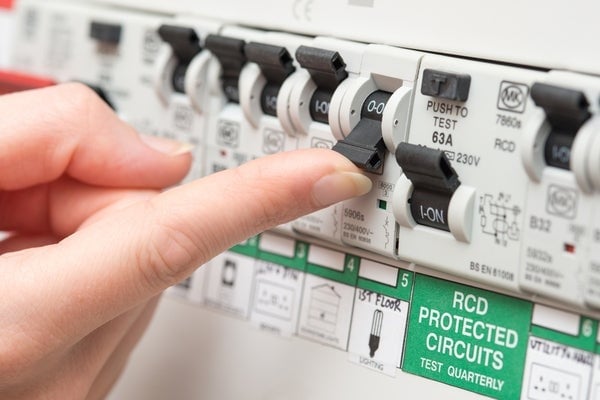
Now, let’s get back to why your circuit breaker keeps tripping. A circuit becomes overloaded when you try to use more electricity than the circuit is made for. If an electrical wire/circuit receives more amperage than it’s intended to handle, it will likely overload. Another cause is loose or corroded wires or connections.
Usually, though, an overloaded circuit happens when too many items are plugged into the circuit. For example, if your hair straightener keeps causing a circuit overload and tripping the circuit breaker every time you try to tame your curls, it might be because you have it plugged into the same circuit as other large appliances; the circuit may not have enough amperage to offer.
If you suspect that your breaker keeps tripping because it is overloaded, try these tips:
- Disconnect something from the circuit and use another circuit for your electrical power needs instead.
- Alternatively, after resetting the breaker and letting it rest for a few minutes, try turning on or plugging in items one at a time. If it overloads again, it’s likely that your appliance keeps tripping the circuit breaker and that the last thing plugged in is the culprit.
- If your outlet keeps tripping the breaker and overloads continue to happen in your home on a regular basis, you may need to install a new dedicated circuit and outlet for the area to handle the amperage load.
To help prevent circuit overloads, try putting large appliances and home systems like your HVAC, washer and dryer, and dishwasher on their own dedicated circuits.
AHS offers HVAC Tune-Ups services.
